This quarter our team is focused on getting young people outside. We’ve been studying the habits that get people outdoors and how their mood changes from the experience. With this goal, we took a deep dive into existing solutions through a literature review of the research landscape and comparative analysis of current apps.

Literature Review:
In our literature review, we set out to investigate two key ideas: how time spent outside affects people’s wellbeing and the successes/failures of past studies on motivating people to go outside. These attempts ranged from gamified exercise applications (exergames) to nature-based after-school programs.
We found some interesting insights when exploring the studies on gamified applications. Often, gamified apps like Pikmin Bloom could lead to a short-term increase in step count for users. However, in some cases like with FitPet, the gamified aspects were not enough to bring change to the user’s habits. An emphasis on the importance of community was brought up in the case of FitPet. People who built communities around these activities saw higher increases in activity.
From this research, we decided to keep in mind the effectiveness of gamification as well as its limitations. We incorporated gamified elements in our intervention study and expanded on these elements by adding social interaction. By giving our participants a location that they could set their sights on, we gave them a game-like objective where the challenge of completion is their busy schedules! Moreover, the FitPet echoed the fact that social interaction was a strong motivator for people going outside. In reaction to this, we made sure to add social interaction as a part of our intervention idea by letting people share pictures at the objective location.
Comparative Analysis:
Headspace
Headspace is your guide to meditation and mindfulness. Users benefit from accessibility to learning meditation practice, intuitive UX, and most-likely gaining peace of mind which is the app’s value proposition. They market themselves as your mind’s best friend improving stress, sleep, and resilience. They recommend daily exercises of varying lengths, intensity, and mood. Its good parts include a memorable and aesthetically pleasing user experience. They also have a flexible freemium model. On the opposite side of the coin, negatively, the app commodifies and arguably appropriates mediation practices without acknowledging their cultural origins. In their interactive meditations, they rarely to never attribute the practices to their generational and cultural context. If I was working for Headspace, I would work to make sure the freemium model does not discourage meditation once fees start happening and make sure that the profiting off of Indian cultural practice is as ethical as possible, yet regardless the practice likely still engages in cultural appropriation. Overall, headspace is an accessible app to help users get into mindfulness while having high potential for intervention in encouraging users to increase time with mindfulness.
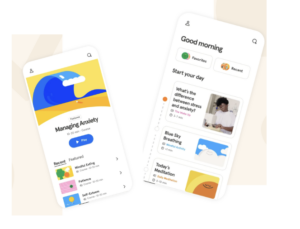
https://apps.apple.com/us/app/headspace-mindful-meditation/id493145008
Stava
Stava is an application that makes fitness tracking more social and centralizes all of your fitness journey in one spot that can be shared with friends. This application offers a social computing approach to exercise that encourages accountability partners, consistency, and an aspect of gamification. Everything is recorded, discovery is promoted, accountability is encouraged through social networks, and exercise more safely with location sharing with trusted users. Its positives include entering challenges, embracing your fitness journey, and accommodating all user types. However, for negatives, the gamification and blunt stats can be triggering to those who have suffered from eating disorders – putting them at further risk and encouraging obsession. If I was an employee, I would work to make sure the app does not encourage the competitive nature of eating disorders, obsessive exercise, and more for vulnerable or recovering individuals. In all, Stava is an accessible app that aids people in getting more active. Their value proposition is “Record. Sweat. Share.” They do not really give an intention of a target audience besides people that are interested in fitness and accommodate all levels and experience-types.
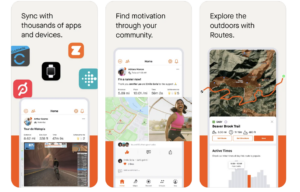
https://apps.apple.com/app/strava-cycling/id426826309
Pikmin Bloom
Pikmin bloom is an AR app that gamifies the act of walking through the care of your Pikmin army and growing flowers with each step that you take. Unique in its low barrier to entry, users can start from any location and the app is friendly towards people used to various levels of activity. For example, while on a commute, a user can open the app and play the game while going through daily routines. The app does not overly gamify elements and rather uses them to encourage users to implement walking in their daily habits.
In addition to the fun visuals and achievements, the app also builds community through minigames and challenges that you can complete with your friends. Most of the app is free except for small purchases that you can buy to enhance features of gameplay (storage, etc). However, users might get bored as there is not much repeat playability once the user plateaus in the game. One aspect to add onto the game could potentially be a storytelling aspect where the users have various mini-adventures that trigger in a location close to them. However, the app has a fresh new approach on gamifying walking by combining elements of AR and locational based technologies to ground users in both the game and their present environment.

All Trails
The app is a mobile version of the popularized all trails website which provides information on various hiking trails. Users are able to search for nearby trails while looking at reviews from recent hikers that include helpful information on the weather and trail conditions. The app includes an offline map with a paid subscription which helps the user navigate through trails and a community building aspect where the user can connect with other hikers and post to social media.
The drawbacks to the app are that most people would use the app on their phones only when they are off the computer but many people still use the desktop version. There isn’t too much of a value add unless you think about the offline aspect for the maps which can be a lifesaver. In addition, unlike other apps, the all trails app focuses on providing functionality towards people who are already looking to hike. However, the app does not include gamified elements or various feedback loops to encourage participation for users who are not interested in getting outdoors. In addition, the community building aspect of the app is quite weak and may not lend to repeat users that often. Overall, the all trails app adds to an outdoor lover’s toolkit on lowering the barriers to explore new hikes in various areas while adding a safety aspect to offline maps when hikers don’t have service.

https://www.alltrails.com/mobile
Geocaching
Geocaching is a popular GPS-based treasure hunting game. The main benefit users get is the enjoyment of the puzzles they’re trying to solve. The product is community driven and is doing a very good job of creating a fun way to get people outside and involved. Participants navigate to specific GPS coordinates to find hidden containers, called “geocaches”. The caches are usually small containers and sometimes have trinkets or toys, logbooks, and even trackables inside. The game provides an interactive experience that encourages exploration and physical activity, while also promoting learning about local history and geography. However, finding caches can be challenging, particularly in urban areas, and some caches may not be well-maintained or located in protected areas. From the user’s perspective, this problem may create a barrier for people with lower mobility to get started using the application and might be prevented by helping new users find caches with additional hints. In conclusion, Geocaching is a unique way to spend time outdoors, providing a fun and engaging experience for those interested in treasure hunting and exploration.
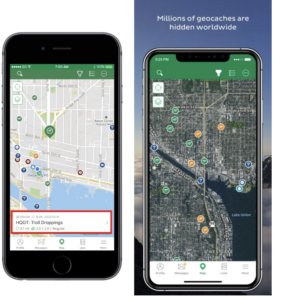
https://www.geocaching.com/play
Outdoor Project
Outdoor Project is an app that provides a comprehensive guide to outdoor recreation, including hiking, camping, and climbing. The main benefit for users is access to information on how and where they can spend their outdoor time. The app offers a wealth of information and resources to help users plan their next outdoor adventure, including detailed trail maps, photos, and reviews. Some of the key affordances of Outdoor Project include easy navigation and search functionality, comprehensive information about outdoor activities, and a community of users who share their experiences and insights. The best thing they supply is the content and detail of the things they recommend. However, the app may have some limitations for users in remote or less-populated areas, as the information and resources may not be as comprehensive for those regions. The unique value proposition of Outdoor Project is that it serves as a one-stop-shop for all your outdoor recreation needs, providing inspiration, guidance, and resources for anyone looking to spend time outside. Whether you’re an experienced adventurer or just starting out, Outdoor Project has everything you need to plan your next outdoor excursion.

https://www.outdoorproject.com/
Seek by iNaturalist
Seek is a mobile app that identifies a variety of plants and animals in nature and encourages users to encounter and identify more species and organisms around them. Incorporated in its name, the app wants users to go out and “seek” these experiences. The app targets both individuals as well as specifically families, characterized as a cozy and simple activity to do together, which may also apply to other groups such as close friends. The app has several positives, including challenges that provide concrete objectives, rewards like titles and aesthetically pleasing badges, and saved progress of the user’s collection of species. These all give the user a sense of personal accomplishment. The broader scope of identifying plants and animals in one app is also nice, helping Seek stand out from the myriad of plant-focused identification apps. There are several drawbacks with Seek, however, the most obstructive one being that the photo identification is moderately good, but not very robust. Kinks in the app’s main technology greatly hinders its usage and demotivates users, so streamlining technical processes in our app will be a strong priority. Seek’s collection-based focus also comes with some potential negatives, such as the question of when reaching peaks of completion, if users would remain motivated to go outside, or how impactful it is at all for users who do not happen to be in an environment that is as diverse or easily accessible. These are problems Seek may have with getting users to adopt long-lasting behaviors, and we can learn from this by designing for a sustainable achievement system in our own app. Overall, however, Seek extends past the multitude of normal plant-only based collection apps. The app portends to offer a fun and informative way to collect the plants and animals that users encounter outside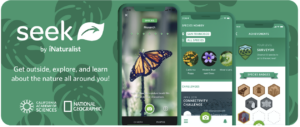
https://www.inaturalist.org/pages/seek_app
Outwalk
Outwalk is an activity tracking mobile app that, like many similar apps, tracks the steps the user has walked or jogged. Outwalk seems to make broader passes to follow an idea of providing objectives and personal features. For instance, users can unlock many pleasing badges based on their distance traveled as they go—making these badges based on actual places, such as Canada, Japan, and the Amazon River, is a particularly nice touch and gives the user a feeling of worldliness. Our app can take inspiration from this in designing meaningful and interesting objectives/achievements. Aside from this, users can tailor their experience with custom daily goals and personalized reports, though these statistics could be boiled down further. While there is the aspect of the app needing location tracking data, this also means using Outwalk requires little to no effort, as it will run in the background. There are some drawbacks as well, as while having leaderboards and being able to connect with other people’s progress is nice, such comparisons need to be treated with care lest they actually demotivate users with negative feedback. There are some design flaws in this sense, such as the display of a “lazy” to “active” bar and the many ways one can compare to friends and strangers. There is also a socializing feature where the user can chat, but this feature seems pointless as there is no real reason to reach out to other people. Hence, it seems prudent to avoid such features and aspects of gamification in our own app. Ultimately, Outwalk is a nice step-tracking app that stands out from the crowd of step-tracking apps through a focus on light competition and personal objectives.
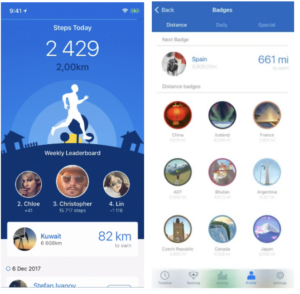
https://apps.apple.com/us/app/outwalk/id1006583272
NatureDose
NatureDose is a mobile app that helps users track how much time they spend inside, outside, and in nature. It uses location tracking to monitor where users spend their time, organizes its findings into a variety of daily and weekly graphs, and helps users set goals for how much time they spend outside each week. A positive aspect of the app is that it recommends different weekly goals based on the type of neighborhood the user lives in (suburb, rural, or city). This helps users set realistic goals without any mental strain. Additionally, the app emphasizes the benefits of spending time outdoors (like a stronger immune system or reduced anxiety in adults). A negative aspect of the app is that it requires a lot of information from the user, such as constantly sharing their precise location. This could be a privacy concern for some potential users. Another critique is that the app relies on complex graphs and number scores to give feedback to the user which can feel overwhelming and confusing at times. What makes this app unique is that it gives users a “NatureScore” for their current location, which will be higher if they are in a location that is very natural and lower otherwise. However, it isn’t entirely clear how a user can increase their “NatureScore” if they aren’t already somewhere full of nature. Overall, NatureDose allows users to keep track of their time spent outside and set weekly goals without having to worry about manually tracking their location. Its target audience is likely adults of all ages who are looking to get the health benefits of spending time in nature regardless of their current lifestyle. In our team’s solution, we might prioritize giving users actionable ways to get closer to their goals rather than just throwing data at them and hoping they can make sense of it themselves.
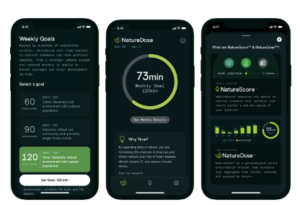
Link: https://www.naturequant.com/naturedose/
[expand pics for actual post]
Roots: Connect with Nature
Roots is a mobile app that encourages its users to be “happier, healthier, and more creative” through a variety of nature-themed experiences. These experiences range from narrated meditation to soundscapes of natural phenomena (ex. the sound of ocean waves). A positive aspect of Roots is the variety of activities that users can explore, helping them find which strategies work best for them. The user can also choose roughly how long they want the activity to last, allowing them to customize the activities to fit the freetime that they actually have. The most significant drawback of Roots is that a majority of its guided experiences are locked behind a subscription. A user that doesn’t pay for the subscription would likely only have a few days of content before they would need to start repeating experiences. Another significant downside is that while the app encourages users to go outside, none of the experiences directly necessitate that the user go outside or be in nature. All of the experiences can be completed inside, making the nature theme of the app feel like a superficial suggestion. Overall, Roots aims to help users connect with nature through guided experiences that utilize natural imagery and sound. The target audience for this app is likely adults of all ages who want to thoughtfully experience nature but may not have the time to. In our team’s solution, we might try to build going outside into our user flow as an essential part of the experience rather than just a suggestion.
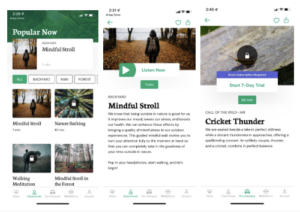
Link: https://getroots.app/
Comparative Matrix
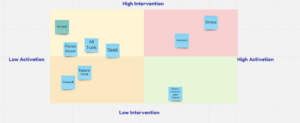

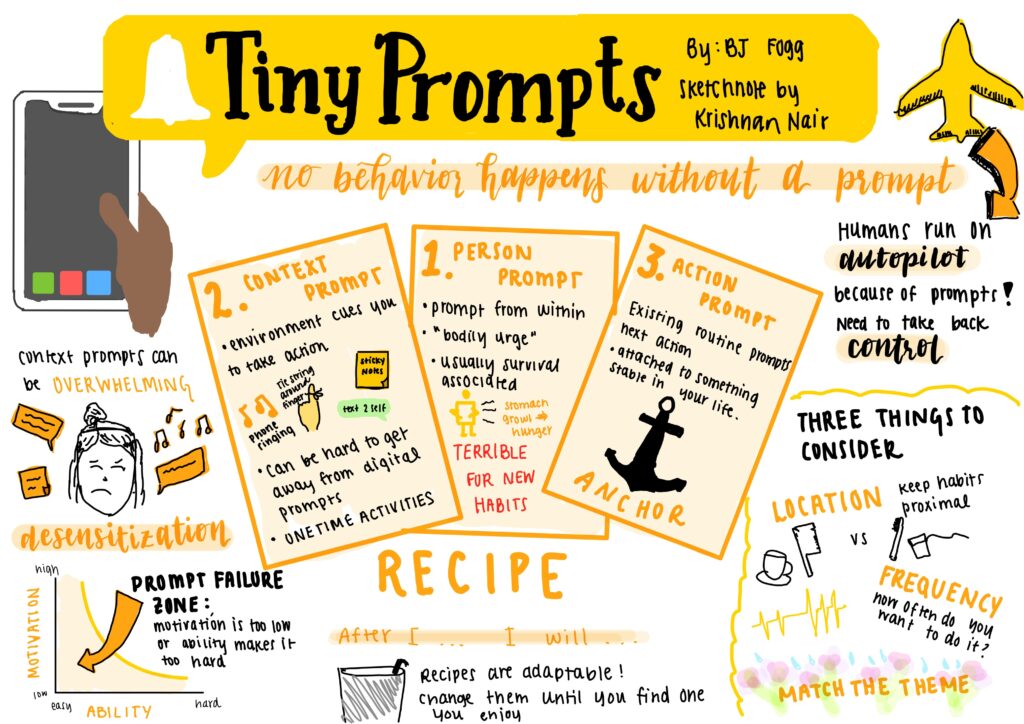
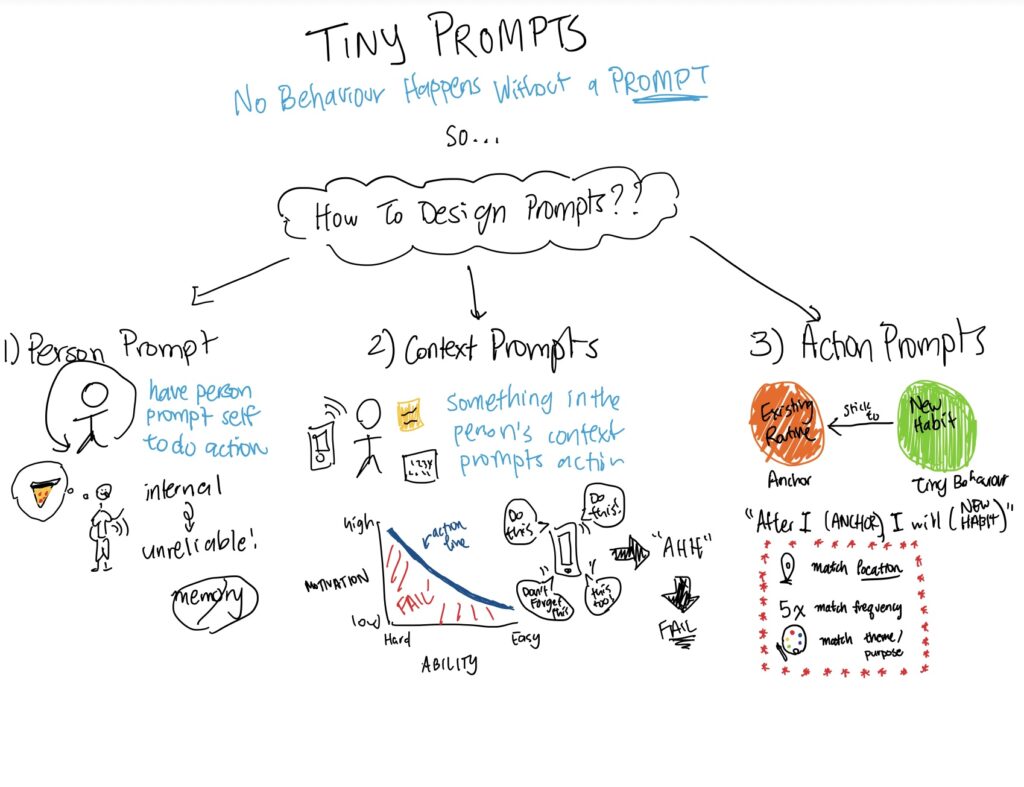
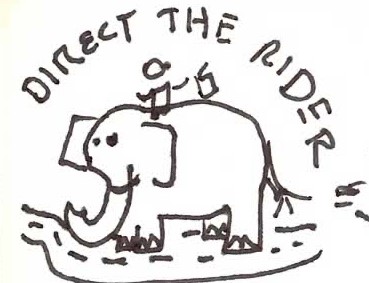
Comments
Comments are closed.